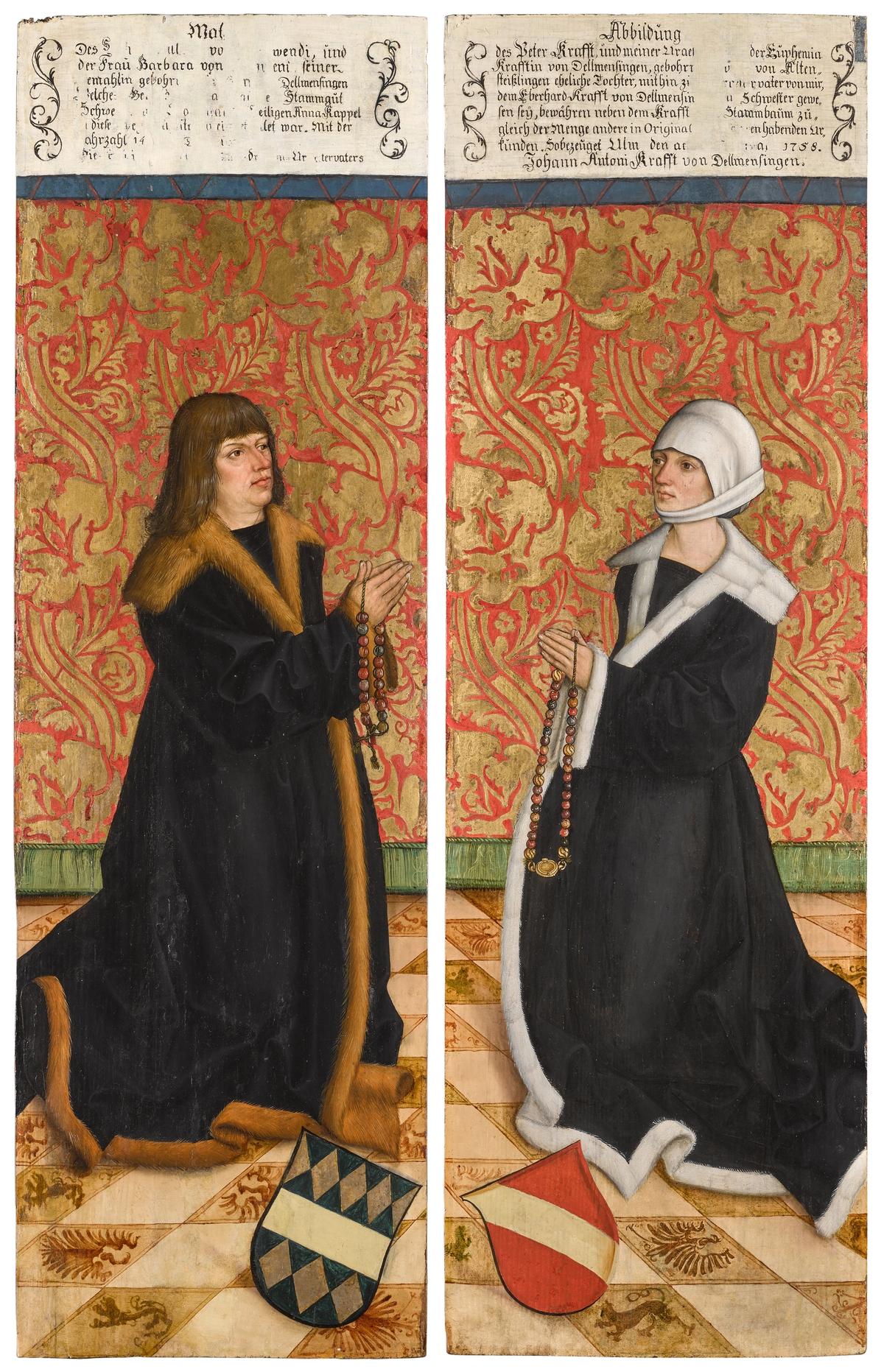A pair of large medieval German panels that have belonged to the same family for more than 500 years are to be auctioned at Sotheby’s Old Master & 19th Century Paintings evening sale in London on 3 July. Painted by Bartholomäus Zeitblom (1455-1518), they are expected to fetch between £400,000 and £600,000.
The donor couple portrayed on what were originally the wings of an altarpiece for the St. Anna Chapel in the southern German town of Schwendi are Wilhelm von Schwendi, who died in 1522, and Barbara Krafft von Dellmensingen. The consignor is a direct descendant of Krafft von Dellmensingen, who died in 1538.
“It is very unusual for artworks to stay in the family of the donors for such a long time,” says George Gordon, Sotheby’s Co-Chairman, Worldwide Old Master paintings.
Sotheby’s says that the altarpiece was commissioned in around 1500. Zeitblom is known to have moved to Ulm by 1482, and remained there until his death, carrying out commissions for wealthy families in the region. “There are a lot of portraits from this era, but very few of them are attributable to an artist,” Gordon says. “The vast majority of artists of this era are anonymous.”
In 1758, members of the Krafft von Dellmensingen family removed the panels from the altarpiece and took them to their home—a step that may have saved them from Napoleon’s plunder, Gordon says. It also accounts for what he describes as their “lovely condition.” In 1963, the missing panels in the church were replaced with modern replicas.
“These panels not only have an unbroken provenance since their creation but are also among the best-preserved donors panels by the Ulm master that still exist today,” the Sotheby’s catalogue note states.


